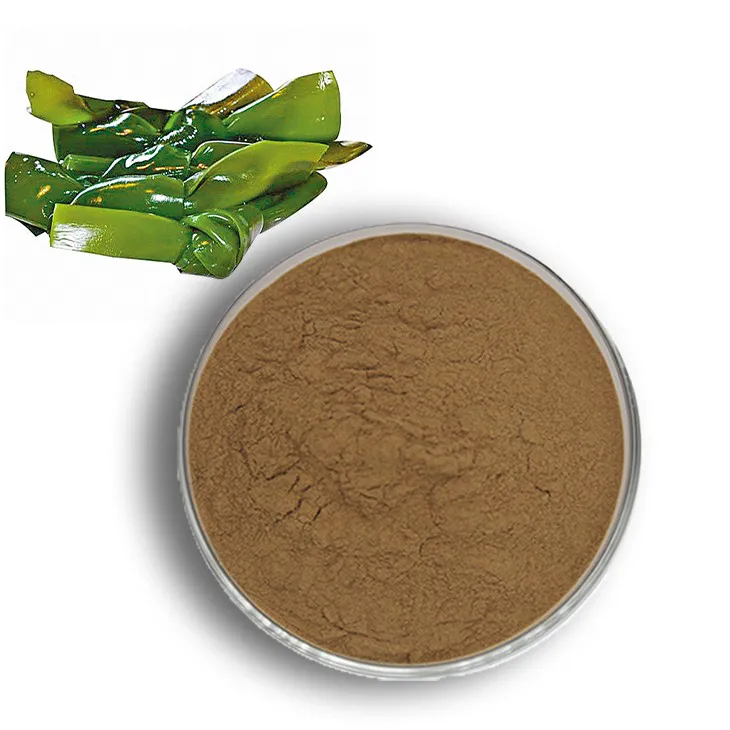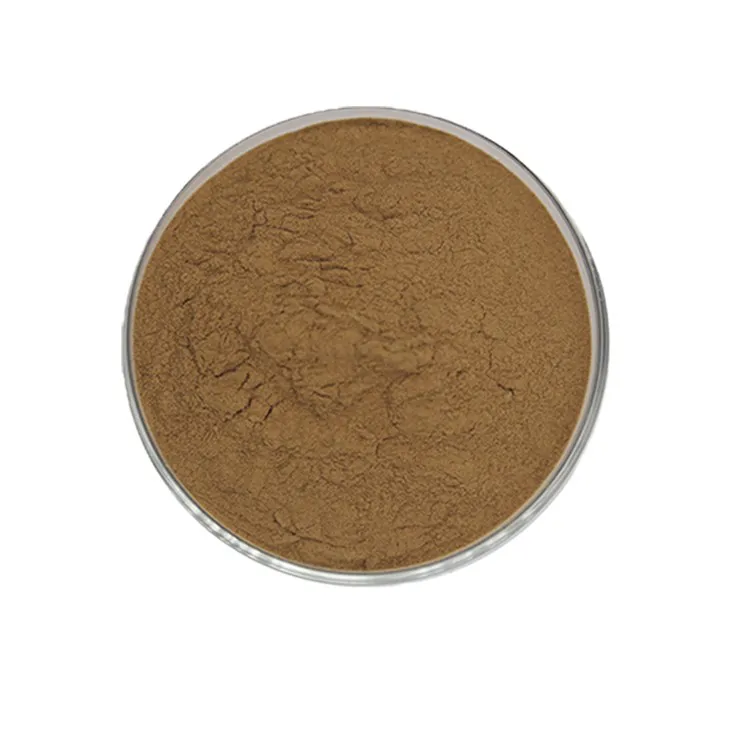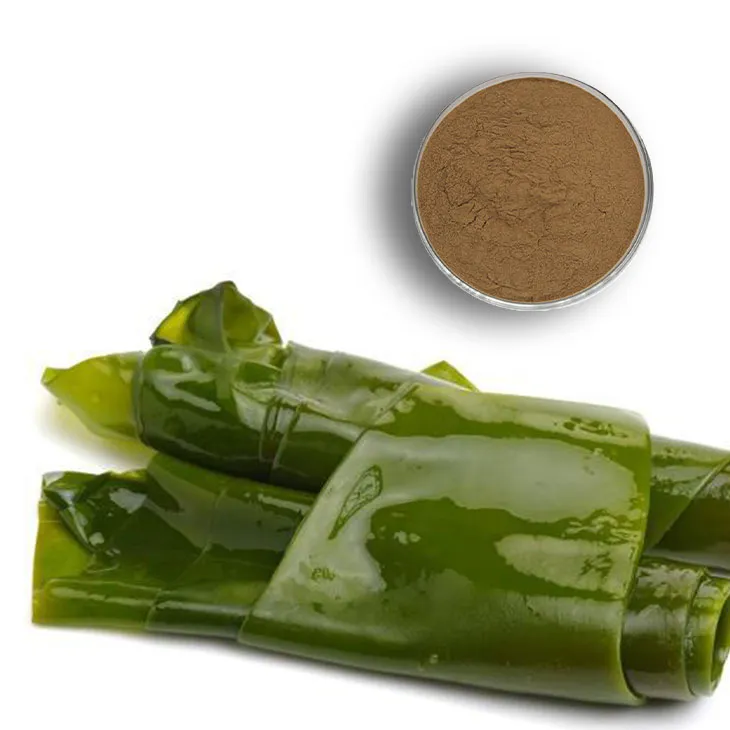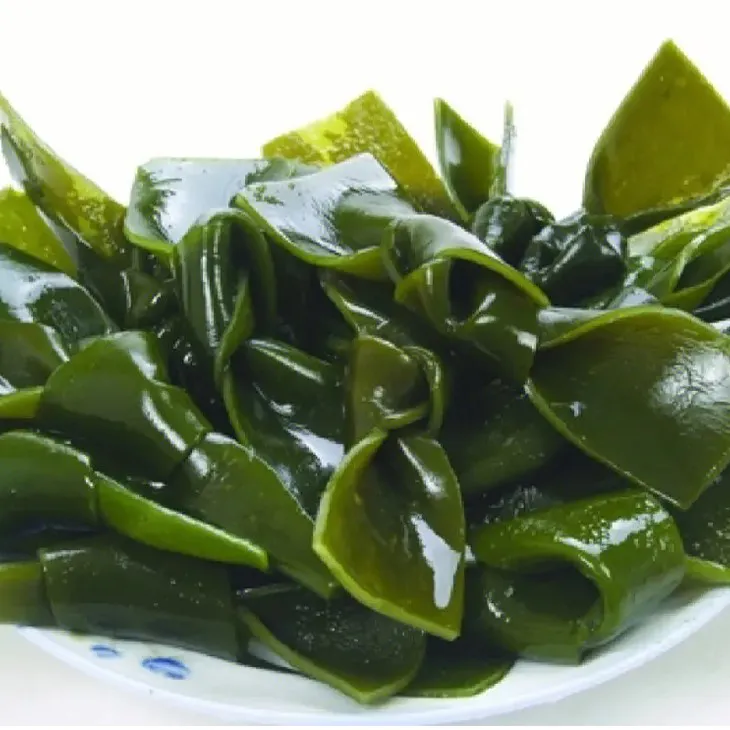- 0086-571-85302990
- sales@greenskybio.com
The extraction process of kelp extract powder.
2024-11-29

1. Introduction
Kelp Extract Powder has emerged as a highly valuable product in various industries, including food, medicine, and cosmetics. This is due to its rich content of polysaccharides, iodine, and other beneficial nutrients. However, the extraction process of Kelp Extract Powder is complex and multi - stepped, requiring careful attention to detail at each stage.

2. Raw material preparation
2.1 Selection of fresh kelp
The first step in the extraction process is the careful selection of fresh kelp. Kelp should be sourced from clean and unpolluted waters. High - quality kelp is typically characterized by its thick fronds, vibrant color, and lack of visible damage or disease. Only the best - quality kelp should be chosen for extraction to ensure a high - quality final product.
2.2 Cleaning
Once selected, the fresh kelp must be thoroughly cleaned. This is crucial to remove impurities such as sand, shells, and other debris that may be attached to the kelp. Cleaning can be achieved through a combination of rinsing with clean water and gentle scrubbing if necessary. The goal is to have kelp that is as clean as possible before the next steps in the extraction process.
2.3 Drying
After cleaning, the kelp is usually dried to reduce its moisture content. Drying can be carried out using various methods, such as natural sun drying or mechanical drying. Natural sun drying is a traditional method that is cost - effective but may be subject to weather conditions. Mechanical drying, on the other hand, offers more control over drying parameters such as temperature and humidity. During drying, the kelp should be spread out evenly to ensure uniform drying. The drying process continues until the moisture content of the kelp is reduced to an appropriate level, typically around 10 - 15% moisture content.

3. Pretreatment of dried kelp
3.1 Pulverization
The dried kelp is then pulverized into small particles. This step is important as it increases the surface area of the kelp, making it more accessible for the extraction of active ingredients. Pulverization can be achieved using a grinder or a mill. The resulting particles should be of a relatively uniform size, typically in the range of a few millimeters to a few hundred micrometers. This ensures that the extraction process can be carried out more efficiently in the subsequent steps.

4. Extraction of active ingredients
4.1 Selection of solvents
Appropriate solvents are used to extract the active ingredients from the pulverized kelp. The choice of solvent depends on the specific active ingredients to be extracted. For example, water is often used as a solvent for extracting polysaccharides, while organic solvents may be required for extracting certain lipids or other hydrophobic substances. In many cases, a combination of solvents may be used to achieve a more comprehensive extraction of the various active ingredients present in the kelp. Some commonly used solvents include water, ethanol, methanol, and acetone.
4.2 Extraction conditions
The extraction is often carried out under specific temperature and pressure conditions to ensure high efficiency. Temperature can have a significant impact on the solubility of the active ingredients in the solvent and the rate of extraction. For example, higher temperatures may increase the solubility of some substances but may also cause degradation of certain heat - sensitive components. Similarly, pressure can also affect the extraction process. In some cases, elevated pressure may be used to increase the solubility of gases in the solvent or to force the solvent into the pores of the kelp particles more effectively. The extraction time also needs to be carefully controlled. Longer extraction times may result in higher yields but may also increase the extraction of unwanted substances. Typically, extraction times can range from a few hours to several days, depending on the specific extraction conditions and the nature of the active ingredients being extracted.

5. Separation of extract and residue
After extraction, the extract is separated from the residue. This can be achieved through various methods such as filtration, centrifugation, or sedimentation. Filtration is a common method that involves passing the extraction mixture through a filter medium, such as a filter paper or a membrane filter. Centrifugation uses centrifugal force to separate the denser residue from the lighter extract. Sedimentation relies on the natural settling of the residue under the influence of gravity. The choice of separation method depends on the nature of the extraction mixture and the scale of the extraction process.
6. Further processing of the extract
6.1 Purification
The extract is further processed, which may include purification steps to remove unwanted substances. Purification can be achieved through methods such as chromatography, dialysis, or precipitation. Chromatography is a powerful technique that can separate different components in the extract based on their physical and chemical properties, such as their affinity for a particular stationary phase. Dialysis can be used to remove small - molecular - weight impurities by allowing them to diffuse through a semi - permeable membrane while retaining the larger - molecular - weight active ingredients. Precipitation involves adding a reagent to the extract to cause the unwanted substances to precipitate out, which can then be removed by filtration or centrifugation.
7. Final drying
Finally, the purified extract is dried again to obtain the kelp extraction powder. Drying can be carried out using methods similar to those used for drying the fresh kelp, such as natural sun drying or mechanical drying. However, in the case of the purified extract, more gentle drying conditions may be required to avoid damage to the active ingredients. The resulting kelp extraction powder should be stored in a cool, dry place to maintain its stability and quality.
8. Conclusion
The extraction process of Kelp Extract Powder is a complex and multi - faceted process that requires careful attention to each step. From the selection of fresh kelp to the final drying of the purified extract, each stage plays a crucial role in ensuring the production of a high - quality kelp extraction powder. The resulting product has a wide range of applications in various industries, making the extraction process an important area of research and development.
FAQ:
What are the main active ingredients in kelp extract powder?
The main active ingredients in kelp extract powder include polysaccharides, iodine, and other nutrients. These components contribute to its various applications in different fields such as food, medicine, and cosmetics.
Why is it necessary to dry the kelp before pulverizing?
Drying the kelp before pulverizing is necessary to reduce its moisture content. High moisture content can make the pulverizing process difficult and may also lead to issues such as mold growth during subsequent processing steps. Drying helps to make the kelp more brittle and easier to be pulverized into small particles.
What kind of solvents are commonly used for the extraction?
Commonly used solvents for kelp extraction include water, ethanol, or a combination of them. These solvents are effective in dissolving the desired active ingredients such as polysaccharides and iodine from the pulverized kelp. The choice of solvent may also depend on the specific requirements of the extraction process and the targeted active ingredients.
How is the purification of the extract carried out?
The purification of the kelp extract can be carried out through various methods. One common method is filtration, which can remove large particles and insoluble substances. Another method is chromatography, which can separate different components based on their chemical properties. These purification steps are important to remove unwanted substances and obtain a high - quality kelp extract powder.
What are the quality control measures during the extraction process?
During the extraction process of kelp extract powder, quality control measures include monitoring the temperature and pressure during extraction to ensure high efficiency and proper extraction of active ingredients. Also, the purity of the solvents, the quality of the fresh kelp used, and the effectiveness of the purification steps are all closely monitored. Regular sampling and analysis of the intermediate and final products are carried out to ensure that the kelp extract powder meets the required quality standards.
Related literature
- Extraction and Characterization of Bioactive Compounds from Kelp: A Review"
- "Optimization of Kelp Extract Production: Key Factors and Techniques"
- "The Role of Kelp Extract in Nutraceutical and Pharmaceutical Applications: An Overview"
- ▶ Hesperidin
- ▶ citrus bioflavonoids
- ▶ plant extract
- ▶ lycopene
- ▶ Diosmin
- ▶ Grape seed extract
- ▶ Sea buckthorn Juice Powder
- ▶ Beetroot powder
- ▶ Hops Extract
- ▶ Artichoke Extract
- ▶ Reishi mushroom extract
- ▶ Astaxanthin
- ▶ Green Tea Extract
- ▶ Curcumin Extract
- ▶ Horse Chestnut Extract
- ▶ Other Problems
- ▶ Boswellia Serrata Extract
- ▶ Resveratrol Extract
- ▶ Marigold Extract
- ▶ Grape Leaf Extract
- ▶ blog3
- ▶ blog4
-
High - quality lily extract products.
2024-11-29
-
Organic Clove Powder Factory.
2024-11-29
-
Chinese suppliers of chastity berry extract.
2024-11-29
-
100% Organic Aged Garlic Extract.
2024-11-29
-
Chinese Chastity Berry Extract Factory.
2024-11-29
-
Acerola Juice Powder
2024-11-29
-
Tinospora cordifolia extract
2024-11-29
-
Sea buckthorn Juice Powder
2024-11-29
-
Uridine-5'-monophosphate Disodium salt
2024-11-29
-
Green Tea Extract
2024-11-29
-
Horse Chestnut Extract
2024-11-29
-
Alisma Extract
2024-11-29
-
Lemon Juice Powder
2024-11-29
-
Bilberry Extract
2024-11-29
-
Aguaje Extract
2024-11-29





















